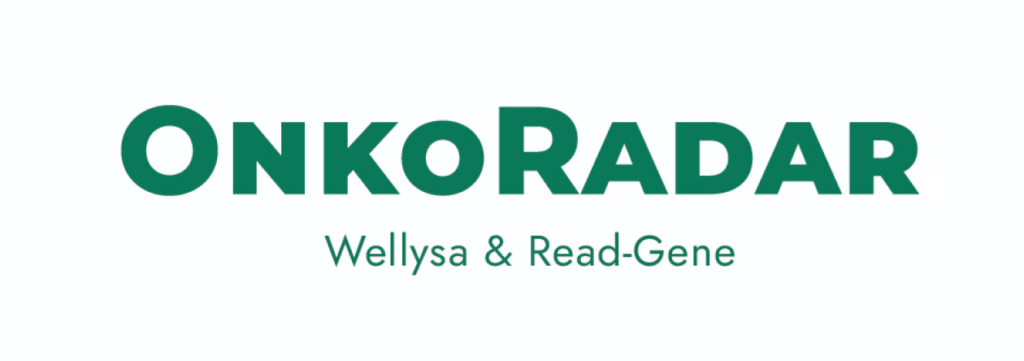Questions
The direct organizer of the program is Wellysa S.A., which specializes in creating innovative digital solutions. Wellysa S.A. acts as the Agent of Read-Gene S.A. and is responsible for organizing the process, providing the mobile application as well as registering and handling the blood collection process and sample transport. Read-Gene S.A. is a provider of medical services consisting of laboratory tests and interpretation of the obtained results. Detailed information about the program organizers and the responsibilities of each Partner can be found in our Terms of Service and Privacy Policy.
The security of our users’ personal and medical data is the foundation of our business. Awareness of the key role played by user trust motivates us to implement the most advanced and effective data protection strategies. We use strong end-to-end encryption for all data transferred between your device and our servers, as well as encryption for data at rest, ensuring it is protected at every stage of processing. The data is not only encrypted, but also anonymized, and personal and medical data are stored in separate databases with separate rules and access policies. OnkoRadar also uses a number of other advanced protection methods, both technological and process, described in detail in our Privacy Policy and Terms of Service.
You can purchase the OnkoRadar service at an affordable price of PLN 999*. At this price, you will receive a comprehensive analysis that holistically verifies key oncological risks. The service will be provided by Read-Gene S.A., an internationally renowned cancer prevention center. Many of the research methods used in OnkoRadar are covered by patent protection. You can pay for the OnkoRadar service via a convenient, secure mobile payment operated by an external payment operator. You can use BLIK payment, online transfer or card payment. * The final price of the product may be lower by using the Affiliate Code. You can find a list of our Content Partners and Medical Partners in the “Partners” tab on the website or in the “Knowledge” tab in the mobile application.
OnkoRadar does not detect cancer, but it does detect the risk of the most common cancers. Tests performed as part of OnkoRadar allow you to recognize the risk of diseases such as breast cancer, ovarian cancer, prostate cancer, kidney cancer, stomach cancer, pancreas cancer, and the risk of other malignant tumors.
The current list of OnkoRadar blood collection points can be found on the website in the “Blood collection points” tab and in the mobile application in the “Knowledge” tab.
Your report is delivered within 30 days from the date your blood was sent and sent via the Extended Family Survey. If there is a medical drug that is present in the Laboratory and is a consequence of the analysis, in this situation your report will be deleted within 30 days from the date of next entry to the Laboratory. Due to the high described characteristics for treatment, within 30 days of diagnosis, we will invite you to a specialist teleconsultation with a professor, where the result and resolution will be provided with one medical significance and a recommendation will be made.
OnkoRadar prepares a comprehensive oncological risk report, based on: a) analysis of pedigree and clinical data b) DNA analysis for mutations: BRCA1, CHEK2, PALB2 and NBN c) control of the concentrations of key elements that affect the risk of malignant tumors: Arsenic ( As), Selenium (Se), Zinc (Zn).
We are different and have different needs. According to today’s medical knowledge, it is impossible to clearly answer this question without knowing your individual situation related to age, DNA mutations, oncological family history or the concentration of your oncoelements. Certainly, the tests that must be permanently included in your calendar include: monthly breast/testicular self-examination, annual blood checks along with monitoring the concentration of oncoelements, as well as periodic medical tests, such as gastroscopy, colonoscopy or ultrasound, with a frequency depending on estimated risk level. Simply put – the greater the burden (genetic, environmental), the greater the risk of developing cancer, which is why it is so important to know your individual risk and adjust the frequency of a given test, e.g. by performing it more often than in people with a lower risk, which will significantly increase the chance of early detection of the disease at the stage when treatment is most effective. Get to know detailed scientific references by downloading the Medical Folder. You can find it on the website in the “Folder” tab and in the mobile application in the “Knowledge” tab.
It’s very simple. Download the application from the Google Play Store or AppStore. The application will guide you step by step through the process of purchasing a service, examining and preparing your oncological risk report. After receiving the report, follow the recommendations received. After the first test, it is worth continuing prevention by checking the concentration of elements annually. Don’t worry – the OnkoRadar application will remind you about this inspection when the time comes.
